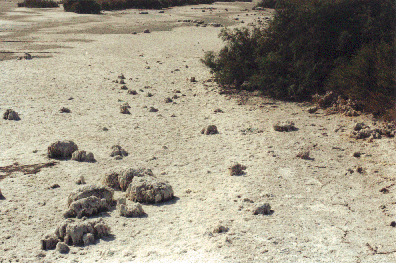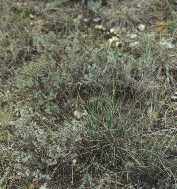 Coastal lake at the end of summer
Coastal lake at the end of summer
Coastal areas
Includes rocky and sandy beaches, and saltmarshes. Generally milder climate, less rainfall and high-salt conditions.
 Coastal lake at the end of summer
Coastal lake at the end of summer
Humid areas
For moisture-loving species - generally freshwater sources.
Plains & cultivated areas
Dominated by human activity, including artificial watering and tilling, grazing and use of agricultural chemicals.
Maquis, garrigues & forests
Major natural habitat - relatively dry. There is still much discussion over the precise definitions of maquis and garrigue, but it is generally considered that they represent stages in the degeneration of evergreen forest.
 Garrigue
Garrigue
Deserts
Er, hot and dry and sandy...
Highlands
Colder, windier and wetter. In northern areas (i.e. S. France, N. Italy etc.), the highlands are not strictly Mediterranean and the climate is more oceanic - the plant species are often the same as those of the rest of Europe.
Soil composition varies considerably throughout the region and no soil is restricted to a particular area. However, as a general rule, garrigue tends to form on high-lime soils/rocks.
